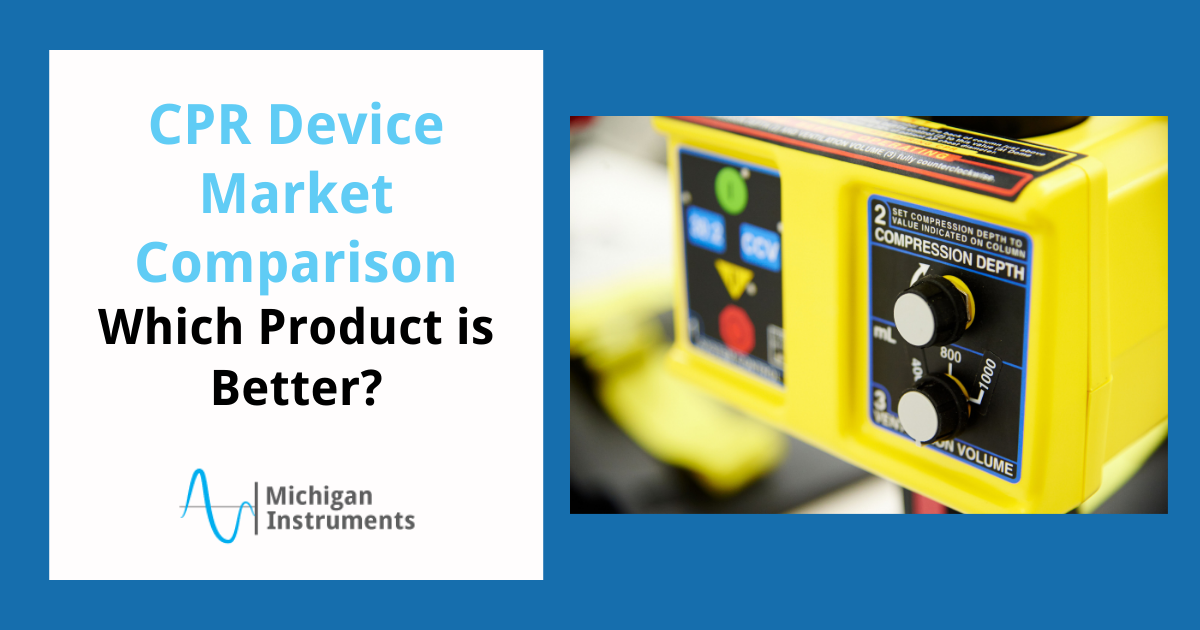
When it comes to an automated CPR compression device, there are a lot of options to choose from. This is why we outlined the 5+ main features of our CPR devices: The Life-Stat 1008 and Thumper 1007CC
1. Ease of Use
Both the LifeStat and Thumper are lightweight and easy to use, each weighing approximately 19 lbs. Plus, they can be incorporated into a hospital “crash cart” setup.
In the case of paramedic usage, both devices can be stored in a case that’s easily accessed and fits into most standard ambulance storage compartments.
Furthermore, setting the units up takes only seconds and requires minimal interruption to manual compressions.
2. Compression Depth
While other piston-type devices have narrow compression depth ranges that are fixed during operation, both the LifeStat and Thumper offer a compression depth range from 0-3.2 inches which is fully adjustable during operation.
In addition, the LifeStat and Thumper feature an option that allows the operator to quickly and easily adjust the compression depth to 20% of the patient’s A-P chest diameter. Our Thumper and LifeStat devices accommodate larger patients than other devices on the market – up to 14.5 inches sternum height and 22 inches chest width.
3. Ventilation
According to Respiratory Care Journal, assisted ventilation is a crucial aspect of cardiopulmonary resuscitation (CPR) because it can directly influence survival through positive or negative interactions with chest compression.
The LifeStat is the only device on the market to offer built-in ventilation, allowing first responders and doctors to focus on other important resuscitation procedures.
4. Meets Current AHA Guidelines
Current AHA (American Heart Association) guidelines state that, “in adult victims of cardiac arrest, it is reasonable for rescuers to perform chest compressions at a rate of 100 to 120/min and to a depth of at least 2 inches (5 cm) for an average adult.”
The uninterrupted compressions provided by both the Thumper and LifeStat allow your team to focus on the underlying cause of the cardiac arrest.
5. Allows Options for 100 or 120 cpm
Michigan Instruments offers models with both 100 or 120 compressions per minute. The Life-Stat ® performs two modes of CPR support in conformance with AHA CPR guidelines. In either mode, compressions deliver at a frequency of 100 or 120 per minute (cpm).
6. Cost
Other devices range between $15,000 – $16,000 with expensive replacement parts. Michigan Instruments offer the absolute best value in the market today, with the lowest acquisition cost and a very affordable ongoing cost of ownership.
Interested in Learning More? Contact Us Today!
While extremely beneficial, most automated CPR devices are expensive and not realistically affordable for many hospitals, EMS units and schools. We make it easy to obtain and maintain CPR devices in any facility, potentially saving lives.
To learn more about how our automated CPR compression device has helped EMS professionals, doctors and nurses provide patients with high quality care for over 55 years, please visit our FAQ page or contact us today.




